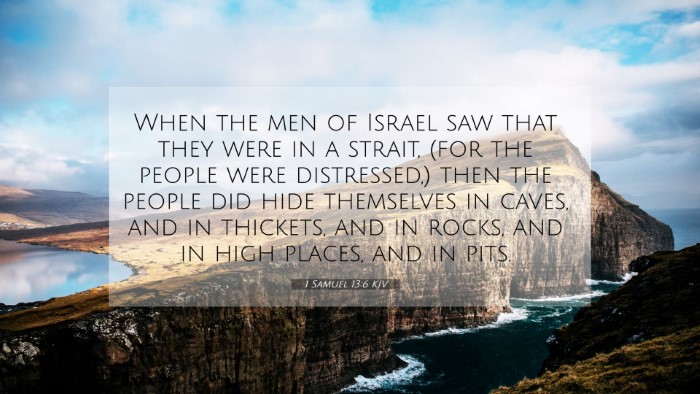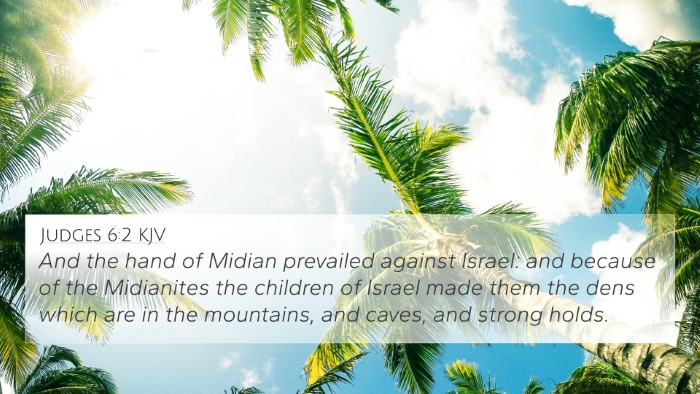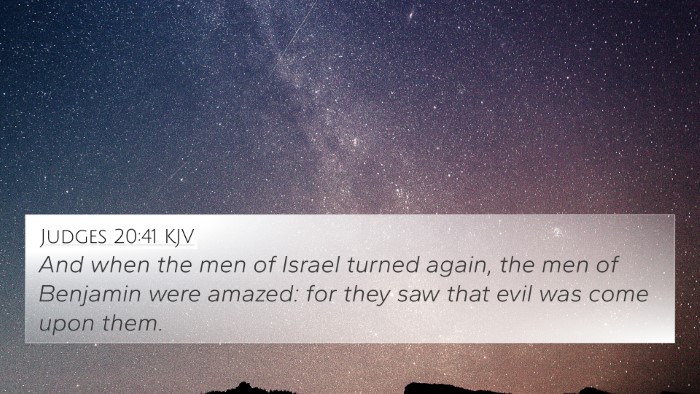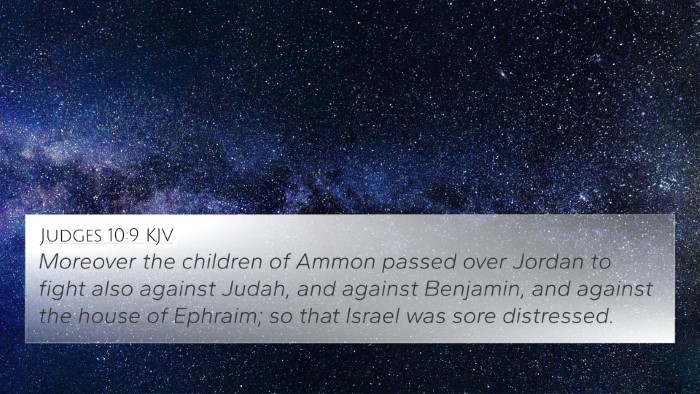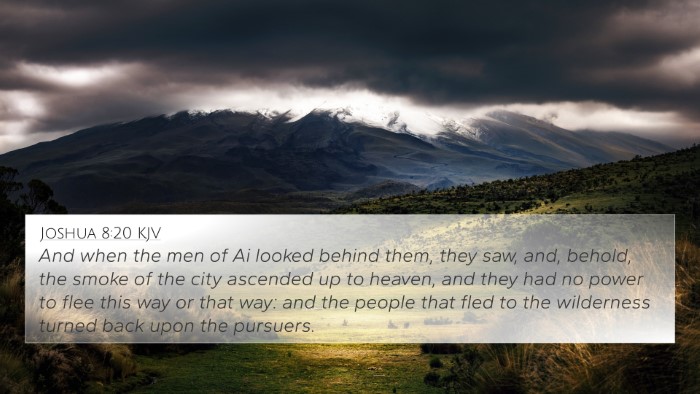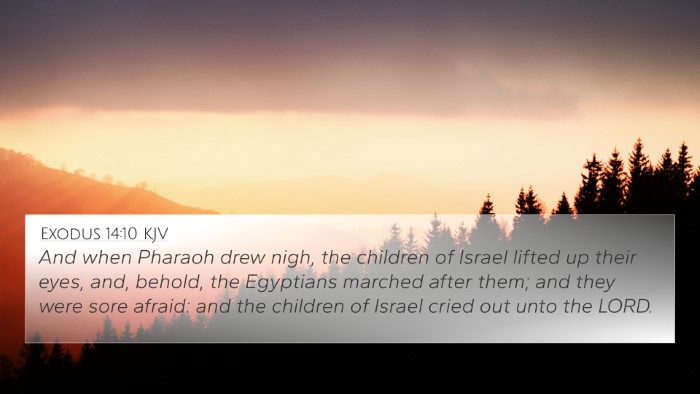Understanding 1 Samuel 13:6
This verse is crucial for understanding the context of the Israelites' fear and turmoil during a significant moment in their history. Exploring its meaning will give insight into their reliance on God amidst overwhelming challenges.
Verse Context and Summary
1 Samuel 13:6 states, "When the men of Israel saw that they were in a strait (for the people were distressed), then the people did hide themselves in caves, and in thickets, and in rocks, and in high places, and in pits."
Commentary Insights
-
Matthew Henry:
Henry emphasizes the sense of fear and despair among the Israelites. Their situation forced them to hide in different places, reflecting their lack of faith and reliance on God. This fear came as they faced the armies of the Philistines, demonstrating a critical moment of testing for Saul and the Israelite army.
-
Albert Barnes:
Barnes points out that the distress faced by the Israelites reflects a moment of lack of faith. The act of hiding indicates a withdrawal from their covenant relationship with God, who provided for them. Instead of relying on divine assistance, they resorted to earthly measures of safety.
-
Adam Clarke:
Clarke interprets this verse as a representation of the people’s complete hopelessness. His analysis shows that the hiding represents not only physical fear but also spiritual retreat from God’s promises. It highlights the importance of faith in dire circumstances.
Key Themes and Connections
This verse underscores several themes:
- Fear and Desperation: The panic among the Israelites illustrates human fear when faced with overwhelming odds.
- Faithlessness: Their actions show a retreat from faith and trust in God. This aligns with many biblical accounts where the fear of man overrides faith in God.
- God's Sovereignty: Despite their fear, God's sovereignty remains a constant theme throughout Scripture, reminding believers of the importance of casting their anxieties on Him.
Cross-References for Deeper Understanding
Several other scriptures may relate to the themes found within 1 Samuel 13:6, particularly exploring fear and God's providence:
- Psalm 56:3: "What time I am afraid, I will trust in thee."
- Isaiah 41:10: "Fear thou not; for I am with thee: be not dismayed; for I am thy God."
- Philippians 4:6-7: "Be careful for nothing; but in every thing by prayer and supplication... and the peace of God shall keep your hearts and minds."
- Proverbs 29:25: "The fear of man bringeth a snare: but whoso putteth his trust in the LORD shall be safe."
- Hebrews 13:6: "So that we may boldly say, The Lord is my helper, and I will not fear what man shall do unto me."
- Matthew 14:30-31: Peter’s moment of fear when he sank in the water, showing the importance of faith over fear.
- Romans 8:31: "If God be for us, who can be against us?"
Application and Reflection
The challenges faced by the Israelites serve as a reminder for modern believers about the nature of fear in their own lives:
- Facing Fear: Believers are called to confront their fears with faith. This can often be challenging, yet the Bible provides numerous examples of God’s faithfulness.
- Understanding God's Promises: Engaging with God's word helps to reaffirm His promises and instills confidence in believers amid life's challenges.
- Community Support: The Israelite experience illustrates the importance of a supportive community. It is essential for believers to encourage one another in times of fear and distress.
Thematic Connections in the Scriptures
Furthermore, the themes presented in this verse can be cross-referenced and analyzed through various lenses:
- Old Testament Context: The connection between fear and faithlessness can be traced back to the Israelites’ experiences throughout Exodus and Judges.
- New Testament Encouragement: In contrast, the New Testament encourages believers to trust in Christ, even when facing potentially overwhelming circumstances.
Conclusion
In summary, 1 Samuel 13:6 serves as a profound reflection on human fear, the need for divine trust, and God's continued sovereignty. By studying this verse and its connections, believers can better navigate their faith lives, drawing insights into how to respond in times of distress.


